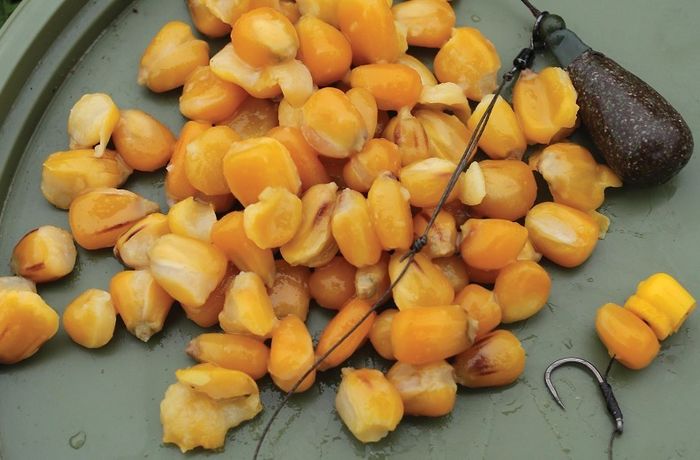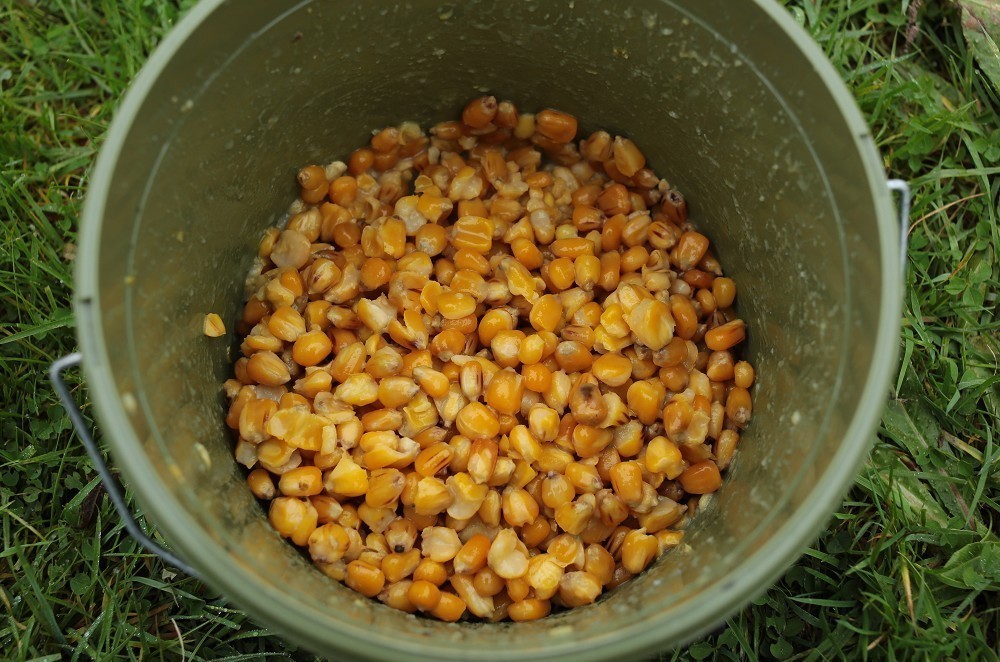Terry Hearn talks particles...
Although Terry Hearn is renowned for his boilie-only approach, particles do play a big part in his fishing, as he explains here...

The last time I used particles in preference to boilies was two winters ago on Spitfire Pool. First off, just to give you a bit of an idea what Spitfire Pool is all about, it’s a small, heavily weeded pool of little more than an acre, with a stock of 14-15 wily carp.
From the very off it was clear that they were pretty ‘sensitive fish’, which had a tendency to disappear once they knew they were being fished for. I don’t just mean melting away due to clumsy footfall or a poorly timed cast, these fish were flighty around bait too, particularly boilies. I’m sure that at other times in the year they eat boilies just the same as any other water, especially during the spring and autumn, but whilst I was there, in the winter months, boilies didn’t seem to be the one.
Several times I got myself into situations where catching seemed an absolute certainty. I’d find the fish, get the traps set without spooking them, but nothing would come of it. The carp just weren’t responding, and this was with a couple of different baits that I’ve been using with confidence for years. I’m not only talking about whilst I was fishing either, on two or three occasions I tried heavily baiting areas with boilies upon leaving, areas which I knew the fish were using, but those areas never produced. In fact, each time I baited heavily with boilies I’d arrive back at the lake a few days later to find that the fish had relocated to a different area at the opposite end to which I’d baited.
Basically, boilies just weren’t doing it. I did manage to catch one on a boilie on my second trip, with a little bag of pellets, but it was from a tiny little black hole in the middle of a weedbed, an area that the carp no doubt felt safer in, and a spot that I only managed to get a rig on by wading out to the very limits of my chest waders. Besides, there’s always a friendly one, and talking with Rich Wilby who runs the fishing, I soon learnt that it was the fourth time that particular twenty-pounder had been caught that year. In complete contrast, around half of the other known residents hadn’t even been out.
It was one of those situations that screamed tigers, but looking at the rules they weren’t allowed, and so I went for another old classic: sweetcorn. The very first time that I scattered a few grains of the yellow stuff on a spot in the edge I got the Wood Common and his friends feeding. It was late evening when I spotted them, in the sort of low light which makes your Polaroids redundant, but even without them I could make out the shapes of four carp feeding on a spot no more than a metre square, tight up against the bank. I was stood behind a screen of dead reeds looking down on them, and though the light wasn’t good enough to see them clearly, I knew that one of them was the Wood Common, as at one point it rose higher in the water, clambering over the top of the other three fish to get to the corn. As it dropped back down, head first, its tail came to within inches of the surface and I saw those unmistakable white tips. At that point I took a deep breath and quietly backed away from the water’s edge to put a rod together.
My bivvy was only ten-yards or so away and so it didn’t take long to get a rod sorted, but despite the fact that I’d only flicked in a dozen or so grains, the fish wouldn’t leave the spot and so it was impossible for me to lower a rig in. Before I knew it, the light had gone completely and when it gets dark in Norfolk, it gets proper dark, no light pollution there, just open countryside. The swim was mega tight with thick weed and pads either side, it was pitch black, and other than not wanting to risk lowering in on top of fish I could no longer see, I also didn’t fancy the idea of playing a big fish in such a confined space after dark. Instead I made the decision to leave it until first light, when the Wood Common would surely still be waiting nearby with its mouth open wide.
Long story short, at first light they were nowhere to be seen, and they never came back. Yep, maybe I should have risked spooking them by getting a rig in the previous evening, but still, I’d learnt that the Spitfire carp loved corn, and from that point on things started coming together. I had a couple of other close encounters with the Spitfire carp over the Christmas period, catching another of the twenties on corn as well as coming very close to catching the Wood Common, but then the weather took a turn for the worse, time ran out, and I had to patiently wait until the following winter before heading back with my new-found edge.
When I returned last November the Wood Common still hadn’t been caught, in fact by this stage it hadn’t been out in fifteen-months, which only strengthened my thoughts about boilies not really being the one. This time round I didn’t even take any boilies with me, just a few tins of corn and a little bucket of well split, salted maize. I should, at this point, mention Spitfire’s healthy population of rudd, which would regularly demolish the corn spots overnight. Mixing a little maize in with the corn just meant that there was always some bait left in the swim, as its harder texture meant the rudd weren’t so keen on it, plus it made a more resilient hookbait which balanced out well with a piece of plastic corn.
This time round things went perfectly to plan and I managed to winkle out one of the better mirrors on my first trip back, followed by the Wood Common on my second trip, both with the corn and maize approach.
Sometimes we use particles because they’re a great, cheap bulk feed which keep fish feeding in the swim for longer. Sometimes we use them because they’re good for cleaning off areas. In the case of tougher particles like tigers and maize, we often use them because they’re more ‘nuisance species’-proof than boilies, but there are other times, such as with Spitfire, when we use them simply because they’re a genuine edge, producing the takes when boilies fail.



